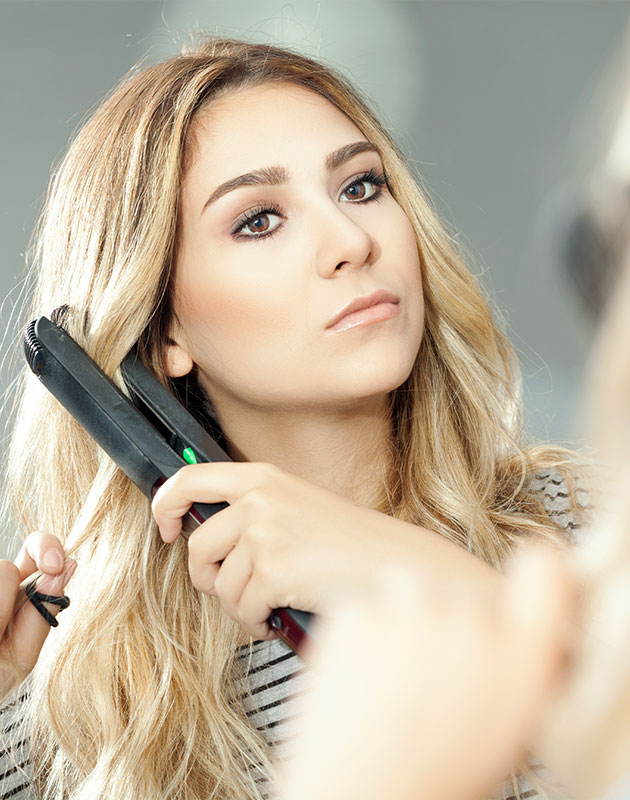-
For a FREE
Consultation -
Current wait:
10 seconds
*By clicking the Submit button, I consent to being contacted by Alexander Shunnarah Personal Injury Attorneys at the number I provided. I also consent to receiving advertisements and telemarketing messages by text message or pre-recorded call, either of which may be dialed by an autodialer. I acknowledge that my consent is not required for purchase, that standard message and data rates apply, and that clicking Submit constitutes my electronic signature for my consent to being contacted and my agreement to the Terms and Conditions.
Some plaintiffs who used these products for years and then were diagnosed with cancer have already filed lawsuits against hair products manufacturers, claiming they failed to warn about the serious risks associated with those products.
The defective product liability lawyers at Alexander Shunnarah are currently investigating cases in which individuals used hair relaxers and straighteners and then developed cancer.
Give our experienced hair relaxer attorneys a call today to schedule a complimentary consultation at 1-800-229-7989.
Hair is composed of three layers:
The Medulla is the innermost layer; only present in large thick hairs.
The Cortex is the middle and usually the thickest layer of hairs.
The Cuticle is the outermost layer.
The cortex is the middle and the thickest layer of the hair. It extends along the length of the hair and through the hair root as well. It provides the hair’s strength and contains the most melanin, so it determines the hair’s color and texture.
Naturally occurring chemical bonds within the hair shaft help hold the protein structures together. They also give the hair its elasticity and strength. The shape of the hair—whether it’s naturally straight or curly—depends on the shape of the follicle in the scalp. But the chemical bonds keep the hair in the shape it was formed. They are the glue holding the proteins together.
In general, curly and coiled hair has more chemical bonds than straight hair. The more bonding in the hair fiber, the curlier and kinkier the hair.
Consumers use hair straighteners and relaxers to make tightly curled or coiled hair straighter and smoother. Powerful chemicals help break up the proteins and bonds in the hair shaft and thereby loosen or relax the curls, coils, and waves so that the cortex is elongated, stretching the original curl pattern
These include sodium hydroxide and are used to straighten tightly curled hair. Also called caustic soda and lye, sodium hydroxide is very corrosive. It is considered to have the highest potential to damage hair.
It works quickly, however, to break down the proteins in the hair and should be rinsed out as soon as possible.
These contain, in place of lye, other powerful chemicals like calcium hydroxide and guanidine carbonate to break the chemical bonds of the hair shaft. They work better for hair that is not so tightly coiled. They can be easier on the scalp than lye, but they may also cause calcium buildup and dry hair.
All of these chemicals work well to straighten or relax the hair, but they can also cause other problems such as the following: Hair thinning, Hair breakage and brittleness, Hair dryness, Hair loss.
They may also cause scalp irritation, itching, and burning, and in some cases, may result in chemical burns.

The U.S. Food and Drug Administration requires manufacturers of hair relaxers and straighteners to list the active ingredients on the product label, but not the rest of the ingredients. Preservatives and fragrances, for instance, are usually not listed. Other chemicals found in hair relaxers may include:
Studies have found that chemicals in relaxers can contain hormonally active ingredients—also called endocrine disruptors—that can contribute to reproductive and metabolic health issues.
These are plasticizing chemicals that have been linked to negative impacts on the reproductive system and growth and development. They are also endocrine disruptors. Hair relaxers contain a specific phthalate called di-2-ethyl hexyl phthalate (DEHP) which is considered to be a probable human carcinogen.
Parabens are preservatives commonly found in hair relaxers. According to Breast Cancer Prevention Partners (BCPP), several studies have found that parabens can affect breast cells and possibly influence their abnormal growth.
The FDA notes that most hair smoothing and hair straightening products release formaldehyde gas, a known human carcinogen, into the air during the hair straightening or smoothing process.
Scientists have found that Black women, in general, are more seriously affected by certain types of cancer. Black women are more likely to die from breast cancer, for instance, than white women across the U.S., even though Black women have a slightly lower incidence rate of the disease.

The National Cancer Institute (NCI) also recently noted that uterine cancer deaths are rising in the U.S., and are highest among Black women.
So far, scientists haven’t been able to determine why Black women may be faring worse than other ethnicities/races when it comes to these diseases. Many factors may be involved, including general health, genetics, environment, and product use.
That Black women may be more affected by the chemicals in hair relaxers/straighteners is a strong possibility, since they use them more often. Forbes reported in 2021 that Black women make up about 60 percent of the customers who use these products.
Emerging data show that the use of permanent hair dyes, chemical relaxers, and straightening products might contribute to an increased risk of hormone-related cancers, breast tumors, and uterine fibroids.
Breast, uterine, and ovarian cancers are all influenced by the endocrine system in the body. It may be that the endocrine-disrupting chemicals in these products may be affecting this system, thereby increasing the risk of these types of cancers.
So far, scientists haven’t been able to pinpoint exactly which specific chemicals may be to blame. But it’s possible that because hair relaxers are so harsh on the scalp, the chemicals in them may more easily penetrate the skin to sink into the bloodstream. Particularly if the relaxers cause lesions and burns, chemical absorption will be greater.
In a 2022 study, researchers examined associations between hair product use and incident uterine cancer among nearly 34,000 participants in the “Sister Study.” The participants were between 35-74 years of age.
Over an average 10.9 years follow-up, scientists found that those women who had used straightening products in the previous 12 months were almost twice as likely to have developed uterine cancer than those who didn’t.
The association was stronger when comparing frequent use (over four times in the past 12 months) with never use. Those who used them more than four times in the previous year were about 2.5 times more likely to develop uterine cancer.
The researchers didn’t find that the link between product use and cancer risk was different by race, but the American Cancer Society notes that the effects may be greater for Black women because they’re more likely to use these products.
Study author Che-Jung Chang, Ph.D., stated in a press release:
“Because Black women use hair straightening or relaxer products more frequently and tend to initiate use at earlier ages than other races and ethnicities, these findings may be even more relevant for them.”
The use of other hair products, including hair dyes and permanents or body waves, was not associated with uterine cancer.
One study published in 2021 also noted an association between heavy use of hair-relaxing products and ovarian cancer. Scientists examined data from over 40,000 women enrolled in the Sister Study, looking at the use of several hair products that may contain carcinogens and endocrine disruptors that may be absorbed into the bloodstream.
They found no risk associated with the hair products they were focused on but did find that those who used hair straighteners/relaxers or pressing products more frequently (over four times a year) the past year were about 2.2 times more likely to develop ovarian cancer.
The researchers concluded that “frequent use of hair straighteners/relaxers or pressing products, which are primarily used by African American/Black women…may be associated with the occurrence of ovarian cancers.”

The regular use of hair relaxers and straighteners may result in the following side effects and health issues:
Frequent use may also increase the risk of:
Some women have already come forward to file hair relaxer lawsuits against the manufacturers.
In October 2022, for instance, CNN reported that L’Oreal, along with multiple other parties, is being sued “over claims that its chemical hair straightening products put women at an increased risk of uterine cancer.” The case was filed in the U.S. District Court in Chicago (Mitchell v. L’Oreal, et al. – 1:22-cv-5815).

In that case, a 32-year-old woman claimed that her uterine cancer was directly caused by her prolonged exposure to toxic chemicals in L’Oreal’s hair relaxer products. She stated in a news conference that she had been getting hair relaxing treatment since she was about 8 years old. She was diagnosed with uterine cancer in 2018.
Two other similar cases followed, one filed in California and one in New York against cosmetic companies including L’Oreal. Legal experts believe more women will come forward, particularly now that awareness is increasing concerning the studies mentioned above.
The plaintiffs allege that the manufacturers failed to warn about the serious health risks associated with using their products, and despite the publication of studies showing these risks, still have not adjusted their product warnings and/or instructions.
Instead, these companies continue to market, advertise, and represent to the public that these products are safe for women to use however often they like.

Call our attorneys today for your Free case evaluation. We’ll go over your case and help you determine if you have a claim.
This depends on the specifics of your situation and case. Financial compensation can be owed to cover medical expenses, pain and suffering, lost wages and more.
Each case is different, and again, this will depend on your specific case. After reviewing the details of your claim, an attorney could give you an idea of what to expect from the legal process ahead and how long it might take.
If you or anyone else who has suffered from addiction after using Abilify, we may be able to help you file an individual lawsuit. We can then pool our research and certain other resources with other attorneys who are working on this multidistrict litigation.
*By clicking the Submit button, I consent to being contacted by Alexander Shunnarah Personal Injury Attorneys at the number I provided. I also consent to receiving advertisements and telemarketing messages by text message or pre-recorded call, either of which may be dialed by an autodialer. I acknowledge that my consent is not required for purchase, that standard message and data rates apply, and that clicking Submit constitutes my electronic signature for my consent to being contacted and my agreement to the Terms and Conditions.













Learn More Through
Our Social Media
Call mE
Alabama Athens Atlanta Bedford Birmingham Boston Buffalo Dallas Gulfport Georgia Houston Huntsville Little Rock Memphis Milwaukee Mobile Montgomery Nashville New Orleans Panama Pensacola Prattville Selma Tallahassee Indiana Washington DC